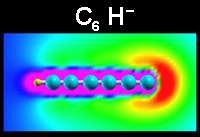Laboratory astrophysics

(PhysOrg.com) -- The term "laboratory astrophysics" might sound like an oxymoron; after all, how can equipment in a small room possibly simulate cosmic effects seen in the vastness of space. But in fact, much of modern astrophysics relies heavily on conclusions reached in the small setting of a controlled laboratory. Both a better understanding of the physical mechanisms at work in the universe, and the development of tools used to observe the universe, have their roots in the laboratory. Moreover, laboratory astrophysics as a discipline includes a theoretical as well as an experimental basis.
Atoms and molecules in space emit radiation that not only reveals their abundances, it also enables scientists to measure their temperatures and motions, thereby helping to determine (via models) the history of the environment and sometimes the probable evolution. Laboratory astrophysics encompasses scientific knowledge in six areas of physics: atomic, molecular, condensed matter (the behavior of materials at extreme densities), plasma (the behavior of gas that is ionized), nuclear, and particle physics. Indeed, astronomy today provides fertile research ground for an astonishingly wide range of scientific disciplines, including the above six plus also general chemistry (how molecules behave in extreme environments), geology (the study of exoplanets), physics (gravity, relativity), biology (the conditions for life in the universe), and mathematics/computing. All these various disciplines, as well as the technologies that drive them, are under discussion these days in the hallways of modern astronomy departments, making astronomy an important locus for interdisciplinary progress in science. Laboratory astrophysics underpins many of the advances that are made.
SAO astronomer Nancy Brickhouse and thirteen of her colleagues have published an important and comprehensive review article this month about the key role of laboratory astrophysics in answering fundamental questions in astronomy and astrophysics, emphasizing discoveries of the past decade. They review six broad areas -- planets and planetary systems, stars, interstellar matter, galaxies, and cosmology. The paper not only provides a useful review of the progress made in these topics, it also elucidates the specific impacts that laboratory astrophysics research has made, and provides a new appreciation for the importance of how research in a small laboratory frames our understanding of a vast universe.
Provided by Harvard-Smithsonian Center for Astrophysics
















